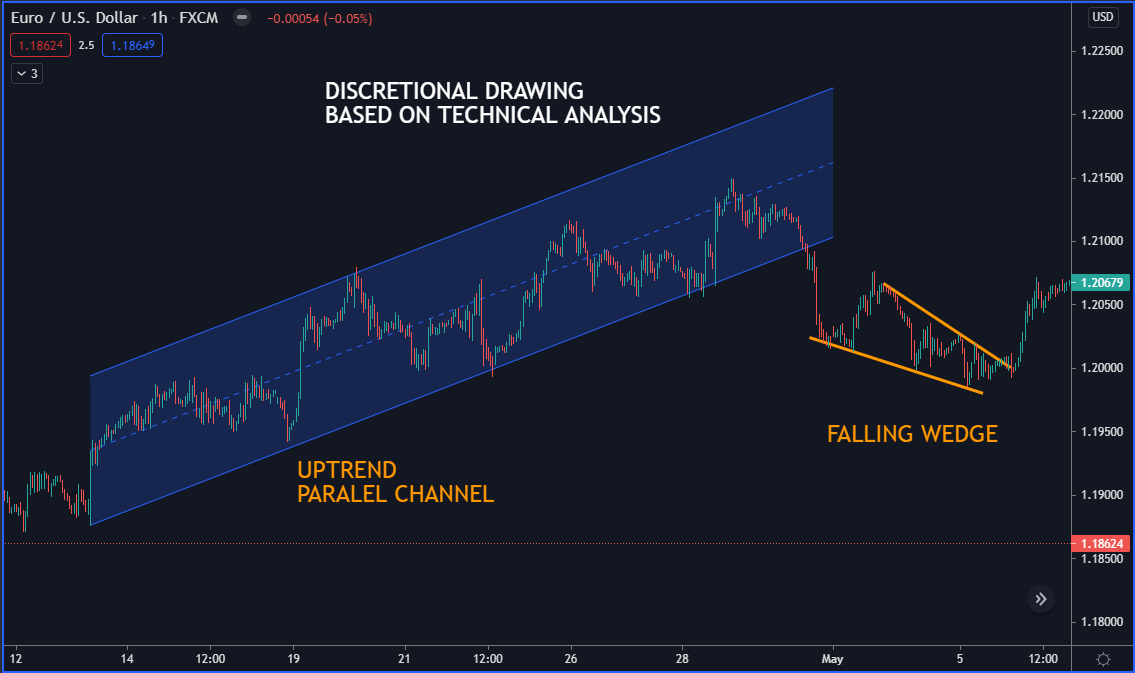The financial world is full of marketers of strategies who write books, give courses, and teach things that are not appropriate for investing. Most of the time, those strategies are based on what they believe could happen in the future, a subjective analysis.
We must have in mind that few profitable trades don’t make us successful traders. Newbies can start winning in the market in the first months and believe they are profitable. Then they’d trade with leverage and lose more money than they can afford – a big mistake.
From the beginning, it is important to backtest the system you are learning. If you use Moving Averages, volume, or other indicators, it is necessary to prove the functionality of the strategy that you test. What is the best way to do it? The answer lies in quantitative trading.
What is quantitative trading?
It’s also called algorithmic and consists of examining numerical variables. In the case of investment or speculation, we are talking about indicators, correlations, or volume. Based on the variables, the quantitative analysis applies mathematical and statistical methods to establish models that allow the development of trading systems.
It is said that a system does not exist unless its rules are written. Well, in this type of analysis, all the rules are written in code.
Other aspects that cannot be reliably quantified, such as economic news or the results of presidential elections, are not taken into account.
Is it more effective and profitable than traditional technical analysis?
I think it is because it allows us to avoid all the noise of the markets. We can study rationally and with sufficient perspective what we will do and invest according to sensible criteria.
You work with probabilistic models to explain the behavior of the market. Models are more accurate than our discretionary judgments. The psychological aspect has an important weight in our decisions. We are humans, and cognitive biases affect our perception of reality. Finding ways to master them is always helpful, especially in trading.
In addition, quantitative trading allows us to prepare our hypotheses and validate them through the backtests. We can be sure that we’re not confusing luck with a job well done. Quantitative trading offers us sufficient guarantees and risk control in the long run.
I will tell you about my experience when I only traded following technical analysis. The situation may be familiar to you.
- You are in front of the screen.
- You think it is a good time to place a trade.
- You look for some signal on the chart.
- You end up placing a trade based on emotion and your previous belief that conditions you.
- You try to justify the trade by arguing technical reasons: it looked like a certain pattern, broken resistance, etc. You try to justify a decision that is not 100% rational and is influenced by your cognitive biases.
Let’s look at an example. In the charts below, you can see the blank one and the other in which I draw an uptrend channel and a falling wedge pattern.


Maybe you do not see a falling wedge in the blank chart, but I do – this is subjective.
In quantitative analysis, the evidence doesn’t depend on the angle at which you look at the chart because established rules tell you what exactly you need to see.
You do not trade what your eyes see. There is no place for anything that incorporates a subjective opinion – only the data matters.
How to apply quantitative trading in forex without programming skills?
Imagine that you have chosen that you like automation, but you do not know how to build your own robot — you do not have the desire or time. What if I told you that you could do it without knowing how to program it?
First of all, you can buy a robot. Choosing a forex robot, or expert advisor, requires time to research and compare. Our selection of the top forex robots can also help you arrive at the final decision.
Creating profitable forex and CFD robots in minutes without writing code and tedious backtesting is possible with expert-advisor-studio.com.
A robot generator provides an unlimited number of strategies. It will find strategies that have been well-behaved in the past without you doing the hard work. It is no longer necessary to create and analyze one by one to see which has performed well in the past.
Conclusions
- Our objective when we start is to obtain good short-term profitability. When we get some profits, it makes us happy. However, as time passes, we realize that the short-term results are not enough. We want to look for ways to obtain high recurring returns year after year consistently.
- It will be easier for us to trust in our trading approach and not get carried away by stress and anxiety when things do not work out as we wish.
- It’s important to know the details of the performance of our strategy – you can model it with backtesting.
- For all the reasons I explained, quantitative trading solves many of the problems based on technical analysis and can generate high returns while controlling risks.
- I am not saying that technical analysis is useless. What I mean is that it should not be the only approach to the market. We should use weapons that work, make sense, and avoid paying attention to the noise.